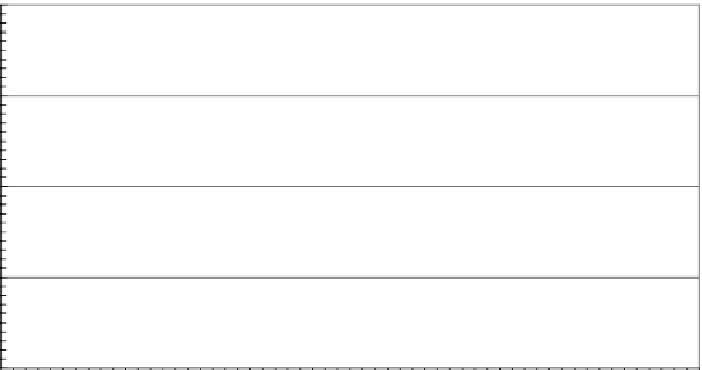Environmental Engineering Reference
In-Depth Information
To equate units for residential and mining exposure, 1 WL is equal to 6.29 × 10
5
Bq m
−3
h
222
Rn
(EEC). Calculated cumulative exposure in WLM in a residence with a radon gas concentration of
100 Bq m
−3
over 30 years is 100 Bq m
−3
× 0.4 × 8760 × 30/6.29 × 10
5
= 17 WLM. Thirty years could be
considered the relevant exposure period for residential study risk estimates.
21.4 INDOOR CONCENTRATIONS
More measurements have been made of indoor radon than for any other natural radionuclide. Some
measurements of radon in the late 1970s were comparable to underground mining concentrations.
The emergence of statistically signiicant lung cancer risks associated with underground mine expo-
sure spurred global measurements. Countries rapidly began indoor radon surveys to assess potential
residential risk (NCRP, 1984a,b; NAS, 1986; NAS/NRC, 1999a,b; WHO, 2009; UNSCEAR, 2006).
The data from 60 country indoor radon surveys are reported in UNSCEAR (2006) and are
reproduced in Figure 21.1. The global indoor radon average from the survey data reported so far
is 55 Bq m
−3
with a range of from 7 to 180 Bq m
−3
. The estimate of the U.S. average from a survey
of about 5000 homes by the U.S. EPA (1992) is 46 Bq m
−3
(1.25 pCi L
−1
), a geometric mean of
25 Bq m
−3
a GSD of 3.1, with 6% of homes exceeding 148 Bq m
−3
.
21.5 OUTDOOR CONCENTRATIONS
The U.S. Environmental Protection Agency (EPA) performed an outdoor radon survey in the United
States that included each major city in all 50 states. Given that the ventilation rate is 0.2-0.5 air
exchanges with outdoor air per hour in most homes, the measurement of outdoor radon establishes
the baseline for indoor radon. Many countries, especially those in tropical climates, have indoor con-
centrations that are essentially outdoor concentrations. For example, indoor and outdoor measure-
ments over a 4 year period in Bangkok and Chiang Mai, Thailand averaged 14 ± 1 and 15 ± 1 Bq m
−3
,
and 44 ± 1 and 39 ± 1 Bq m
−3
, respectively (Chittaporn and Harley, 2000).
Indoor radon country surveys
200
150
100
50
0
Country
FIGURE 21.1
Global indoor radon measurements in 60 countries. (From UNSCEAR,
Sources-to-Effects
Assessment for Radon in Homes and Workplaces
, United Nations Scientiic Committee on the Effects of
Radiation, New York, 2006.)


Search WWH ::

Custom Search